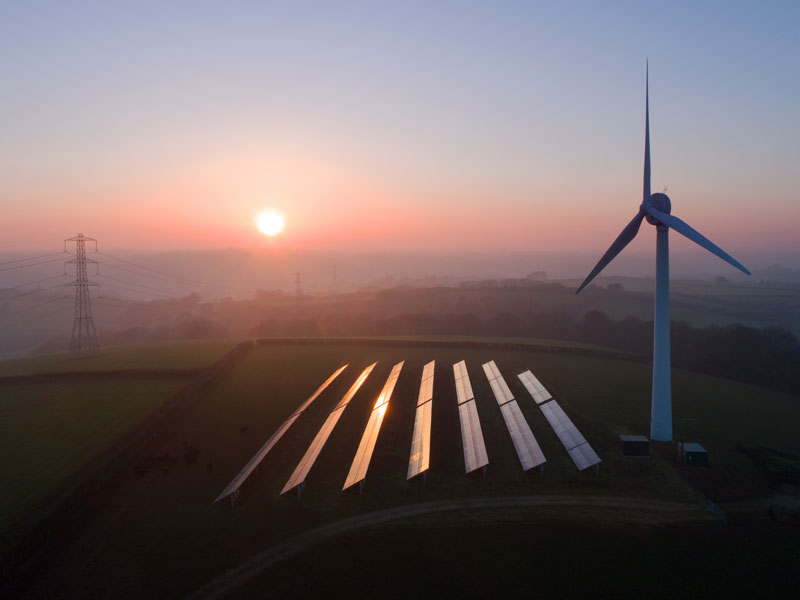Data centre investments are increasing in response to growing demands from consumers and businesses for computing power and digital services. In parallel, regulations for data centre sustainability requirements are getting tougher.
With the data centre industry booming and eager for land, which can push up property prices in residential areas, and power constraints on energy grids, governments are increasingly aware of the industry’s carbon footprint. Data centres and data transmission networks account for about one percent of global electricity, the International Energy Agency has estimated, although some experts reckon that the figure could be higher.
In short, data centre sustainability is in the spotlight.
How can data centres scale with confidence, support computing-intensive technologies such as artificial intelligence (AI), virtual reality, and 5G while reducing their carbon footprint and complying with tougher environmental regulations?
Good progress is being made, including advances in eco-friendly refrigerants used in data centres and voluntary industry initiatives − such as the "Climate Neutral Data Centre Pact” in Europe between cloud infrastructure providers and data centre operators, which agreed to make European data centres climate neutral by 2030. More needs to be done, however.
Fuel Cell Opportunity
Part of the answer may be fuel cells that use hydrogen or other fuels to produce electricity. Fuel cells – which have been around since the 1960s and were used in the first NASA space missions − have long been tipped as a clean and efficient source of power for consumers and industry, including data centres.
Progress has been slow, but a European hydrogen and fuel cell project involving Vertiv – the EcoEdge PrimePower, or E2P2 for short – may help accelerate progress.
The 2.5-million-euro Clean Hydrogen Partnership, funded by the European Commission, was announced in December last year.
The partnership aims to develop a proof-of-concept for how low-carbon fuel cells can provide green power for data centres.
The consortium of seven companies – Equinix, InfraPrime, RISE, Snam, SolidPower, TEC4FUELS and Vertiv – will attempt to integrate solid-oxide fuel cells with uninterruptible power supply (UPS) technology and lithium-ion batteries to provide resilient and clean primary power for data centres and other critical infrastructure.
Fuel cells are recognised as a cleaner and quieter power solution that can reduce the strain on urban power grids. They can be deployed on-site at a data centre campus, and operate using natural gas, biogas, liquified petroleum gas (LPG) or green hydrogen, which can be transported and distributed over existing gas networks.
Low-carbon Future
In the longer term, it is hoped that using fuel cells will help to pave the way for using green hydrogen for both backup and prime power systems.
This project and other matters were recently discussed in DCD’s Towards Net-Zero event by panellists including Vertiv’s own Arturo Di Filippi, Global Offering Manager, Smart Power, Vertiv, Dan Loosemore, Chief Operating Officer at DatacenterDynamics, Jon Summers, Scientific Lead in Data Centres, RISE Research Institutes of Sweden, a state-owned organisation that collaborates with universities, industry and the public sector; and David Hall, formerly Senior Director Technology Innovation, Equinix.
As Dan Loosemore said during the event: the data centre industry’s environmental performance is under growing scrutiny as governments try to meet targets – part of the “European Green Deal” − for becoming carbon neutral by 2050 or earlier.
“How do data centres become a force for good in a low-carbon environment?” said Dan. Fuel cells can help reduce the data centre industry’s reliance on natural gas and diesel-powered generators, he added.
Vertiv will use its experience in AC power systems as well as in prefabricated modular solutions for data centres to design and develop an integrated fuel cell power module, including the Vertiv™ Liebert® EXL S1 UPS and Vertiv™ HPL lithium-ion batteries.
Arturo Di Filippi said that the target of the E2P2 project is to generate an 80 kW net power proof-of-concept consisting of a Vertiv power module with 16 fuel cell modules and UPS, lithium-ion batteries, and switchgear.
For green fuel cell technology to become commercially viable, it must be transportable, easy to use and maintain, and reasonably priced. Arturo said that Vertiv is working with several fuel cell manufacturers and suppliers to understand how “costs can be driven down.”
Green Power Standards
Regardless of how successful the E2P2 project is, its impact will be limited unless others in the data centre industry build on its work.
In the webinar, Jon said that it was very important that any solution for low-carbon fuel cells turns into an “open standard”. He added that the E2P2 consortium will publish results about its fuel cells research, including operational data.
David added: “With hardware, making open standards for fuel cells work is critical”.
Equinix aims to produce more local, low-carbon and no-carbon power for data centres. Medium-term aims for using more sustainable technologies in data centres could include using natural gas fuel cells, diesel generators not powered by fossil fuels, and renewables with battery storage, David said. Longer term aims could include primary fuel cells that use hydrogen, large-scale battery storage, and on-site hydrogen production.
It is early days for the project, but the E2P2 initiative has the potential to slash data centres’ environmental impact and pave the way for a greener and more efficient digital infrastructure.
Watch the webinar on demandRead more from Vertiv experts on energy management and other sustainability topics in our Eco-Insights Blog Series.










